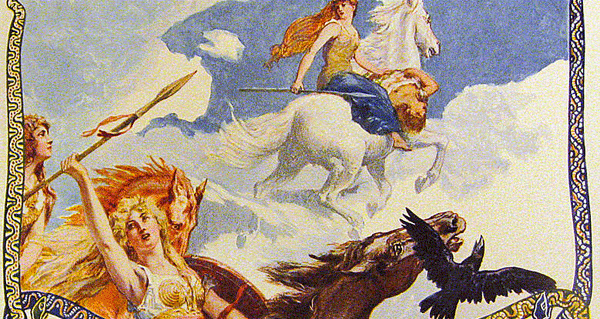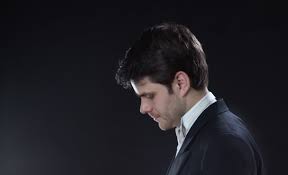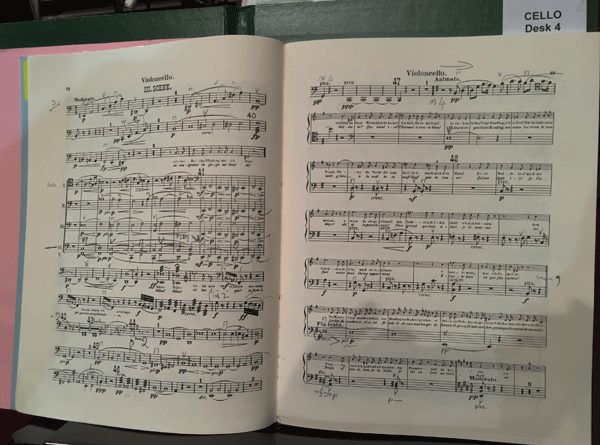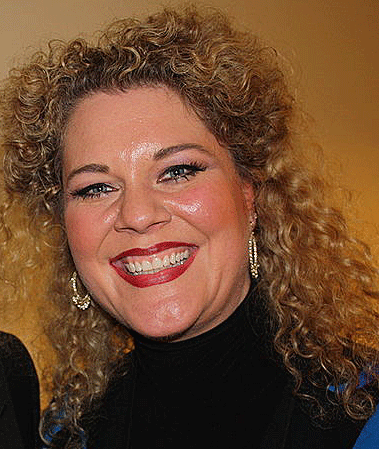Valkyries

Painted by Emil Doepler
PREMIERE: 26 JUNE 1870 in MUNICH. It was done as a ‘stand-alone’ piece, not part of the Cycle, and reaction was mixed. But Wagner wasn’t going to allow 26 year’s worth of work down the drain and ultimately, as both part of the Ring cycle and alone, it stands atop the operatic ramparts.
Discussion: February 10, 2016 at Adelaide Symphony Orchestra
Performance: February 13, 2016 at Festival Theatre, Adelaide
Die Walküre shows Wagner blossoming as musician and dramatist. In the words of Ernest Newman, “he abandoned himself luxuriously to the sheer joy of music-making, both enlarging the scale of his design for each episode and delighting in fine filigree work from bar to bar; at the same time he has acquired a completer command of what is really the whole art of musical-dramatic composition of this kind – making his leading motives serve simultaneously a psychological and a musical purpose, in a more effective way than had been possible for him until now.”*
The Valkyries has some quintessentially Wagnerian flaws – excessive length and unnecessary repetition, but it clamours rather convincingly to be considered one of the greatest operas devised. ASO’s new Principal Conductor, Nicholas Carter, fresh from Berlin and still shaking off jet-lag, took the ASO in hand and determined to lead off with a bang – Beethoven and Wagner (Walküre, Act 1). On Wednesday evening, the Richard Wagner Society of SA hosted one of its invariably superb functions, this time at the ASO studios, when we had two different but complementary discussions of this great link-in-the-chain of Wagner’s incomparable cycle, Ring of the Niebelung.
ASO’s new Principal Conductor, Nicholas Carter, fresh from Berlin and still shaking off jet-lag, took the ASO in hand and determined to lead off with a bang – Beethoven and Wagner (Walküre, Act 1). On Wednesday evening, the Richard Wagner Society of SA hosted one of its invariably superb functions, this time at the ASO studios, when we had two different but complementary discussions of this great link-in-the-chain of Wagner’s incomparable cycle, Ring of the Niebelung.
Emeritus Professor of Music at Auckland University, Heath Lees, an avuncular gentleman if there ever was one (L says he is avuncular in the sense that you’d like to have him as your uncle), gave an appealing, amusing and revelatory exegesis on Die Walküre, his great learning worn lightly as he explained how this piece represented when Wagner’s music “came of age,” when Wagner moved from gods to humans, rendering them in a startling, awful, human way. And his music freed itself as well, going from the stock four-bar phrase to free-flowing wonder, all set to his ‘focal points of feeling’ (or leitmotifs).
Enlivened by some concert footage, lovely Rackham sketches and extracts on the piano, the Professor captivated the crowd and as a bonus, leading Heldentenor Simon O’Neill (Siegmund) teamed up with Lees for an impromptu rendering of the Winterstürme.
Society President Geoffrey Seidel introduced Artistic Director, Simon Lord, who interviewed Nicholas Carter about his appointment as Principal Conductor and the logistics of swanning into town and immediately putting Die Walküre on. He seemed fairly relaxed, considering this day had comprised his very first run-through with the orchestra, but then he knows the piece from rote and the ASO musicians are no slouches.
Carter and Lord are a good double-act, and especially enlivened by curve-balls pitched at them from back of the room by the ASO’s Managing Director, Vincent Ciccarello. But one point in particular struck The Varnished Culture as profound – with respect to the musicians, Carter rates highly those who closely listen and adapt to the tempi and tone, apt pupils akin to thespians who’ve learnt Charlie Chaplin’s dictum: “Don’t just stand around waiting for your turn…Learn to Listen.”
The ASO under Carter on the Saturday night was impeccable. First we had the comparatively gentle Violin Concerto in D major, with James Ehnes as lead violin. Marvellous Beethoven, and Ehnes followed that up as an encore with an intricate Bach sonata for solo violin, in which he seemed almost to be dancing with the instrument whilst balancing on a hover-board. It is a great testament to ASO to have had a star such as Ehnes for the half, and rather sweet and stylish that, accompanied by Simon Lord, he later filed into a seat in the crowd, carrying his violin case, to enjoy the Wagner piece.
This of course was Die Walküre , Act I. Tempestuous, erotic, elemental, it is really the linchpin of the whole cycle – when Wotan hands the baton to his offspring, Siegmund and Sielglinde, whose incestuous coupling will produce the ‘boy-god’, Siegfried. Simon O’Neill and Michelle DeYoung, sans sets and costumes, were magnificent as the tormented siblings, with staunch support from Shane Lawrencev as nasty Hunding. Conductor Nicholas Carter was galvanised, coiled and crouching like a panther on the podium, brilliantly keeping the sparks flying and the music flowing. There was minimal vision to match the sound of course, but at the conclusion, one wanted Act II, forthwith! A great snippet – a portent of more to come, perhaps? May we dare pine for another Adelaide Ring?
[*Newman, The Wagner Operas, p.493.]Leave a comment...
While your email address is required to post a comment, it will NOT be published.







0 Comments